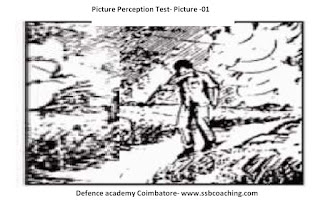Sample Sainik School Science & Social studies booklet by Sainikrimc.com
Defence Academy Coimbatore
A leading coaching academy for
Sainik, Military and RIMC Schools,
NDA, IMA, AFCAT
SSB, FSB Interview
http://www.ssbcoaching.com
call 094437 20076
Sample contents of book let Social studies and Science Published by
Defence Academy Coimbatore
www.sainikrimc.com
for entrance Exam 2018
Sample contents of book let Social studies and Science Published by
Defence Academy Coimbatore
www.sainikrimc.com
for entrance Exam 2018
Chapter- III Simple
Machines
A
machine is a device or a tool which helps us to do WORK easily, efficiently and
faster.
Simple machines do work either by changing
the direction of FORCE or by reducing the effort needed.
1)
A MACHINE
is a device or a tool which helps us to do work easily.
2) LEVER is a rigid bar or rod that rests
on a support called fulcrum.
3)
Levers are categorized into THREE different classes.
4)
In first class levers, the FULCRUM is placed between the effort and the load.
5)
In second
class levers, the LOAD is between
the fulcrum and the effort.
6)
In third class levers, the EFFORT is between the load and fulcrum.
7)
An INCLINED
PLANE is a slopping or a slanting surface which connects a lower level to a
higher level.
8)
A PULLEY is
a simple machine made with a rope or chain wrapped around a wheel.
9)
A wheel and axle arrangement is a modified lever
of the FIRST CLASS.
10)
A SCREW is an inclined plane wrapped
around a rod spirally.
11)
A WEDGE is
an object with at least one slanting side ending in a sharp edge.
12)
Which of these simple machines helps to move
heavier objects to a height?
Ø
Lever b)
inclined plane c) Pulley d) Rope
13. Tongs are an example of
a) First Class Lever b) Second Class Lever c) Third Class Lever
14.
Lever is a rigid bar or rod that rest on a support called____
a) Fulcrum b) Load c)
Effort d) None of these
15.
Which of these is a modified level of the first class?
a) Wedge b)
Fixed Pulley c) Wheel and axle
Chapter 4: AIR and WATER
Ø
Air is present everywhere
around us. We cannot see it, but we can feel it.
Ø
The planet earth is
surrounded by a thick envelope of air called ATMOSPHERE
Ø
The atmosphere is divided
into FIVE layers- Troposphere, Stratosphere, Mesosphere, Thermosphere and
exosphere .
Ø
Nitrogen is the most abundant gas
and comprised 78 percent of the earth’s atmosphere. OXYGEN comprised almost 21
% of the atmosphere. Carbon dioxide only accounts for 0.03 % of the Atmosphere.
Ø
Air also consists of minute
quantities of gases like argon, ozone, hydrogen, water vapour, neaon, krypon,
etc. Air is colourless, odourless and taastless. AIR occupies space and has weight. It exerts pressure and supports combustion.
Ø
Water is also essential for
life. It is found on the earth in
different sources like, RIVER, OCEANS, Under the ground.etc.
Ø
Based on their nature,
impurities can be of TWO types, Soluble and insoluble impurities.
Ø
Soluble impurities can
dissolve in water; insoluble impurities do not dissolve in water.
Ø
Soluble impurities are
REMOVED either through evaporation or Distillation.
Questions:
Ø
AIR comprises almost 21
percent of the earth’s Atmosphere.
Ø
Air also has WEIGHT and
exerts PRESSURE
Ø
The air pressure VARIES
from place to place and it decreases as we go UP.
Ø
It is very import to
consume 3 litres of water to stay healthy
Ø
There are FIVE layers of Atmosphere.
Ø
Nitrogen consists of 78 %
of the earth’s atmosphere
Ø
Air consists of Oxygen
which supports LIFE.
Ø
Insoluble impurities can be removed through
SEDIMENTATION , Decantation and Filtration.
Ø
Which of these gases
comprises 78 percent of the Atmosphere?
a)
Oxygen, b) Nitrogen, c) Carbon di oxide d) Ozone
Ø
Air supports combustion
because it contains____
a)
Nitrogen
b) Water Vapour c) Oxygen d) Carbon di oxide.
Ø
Which of these is a purification technique for
the removal of insoluble impurities?
Ø
A) Distillation b)
Evaporation c) Sedimentation and Decantation.
Ø
Which of these is the best technique for removal
of insoluble impurities?
Ø
A) Distillation b)
Evaporation c) Sedimentation and Decantation.


Comments
Post a Comment